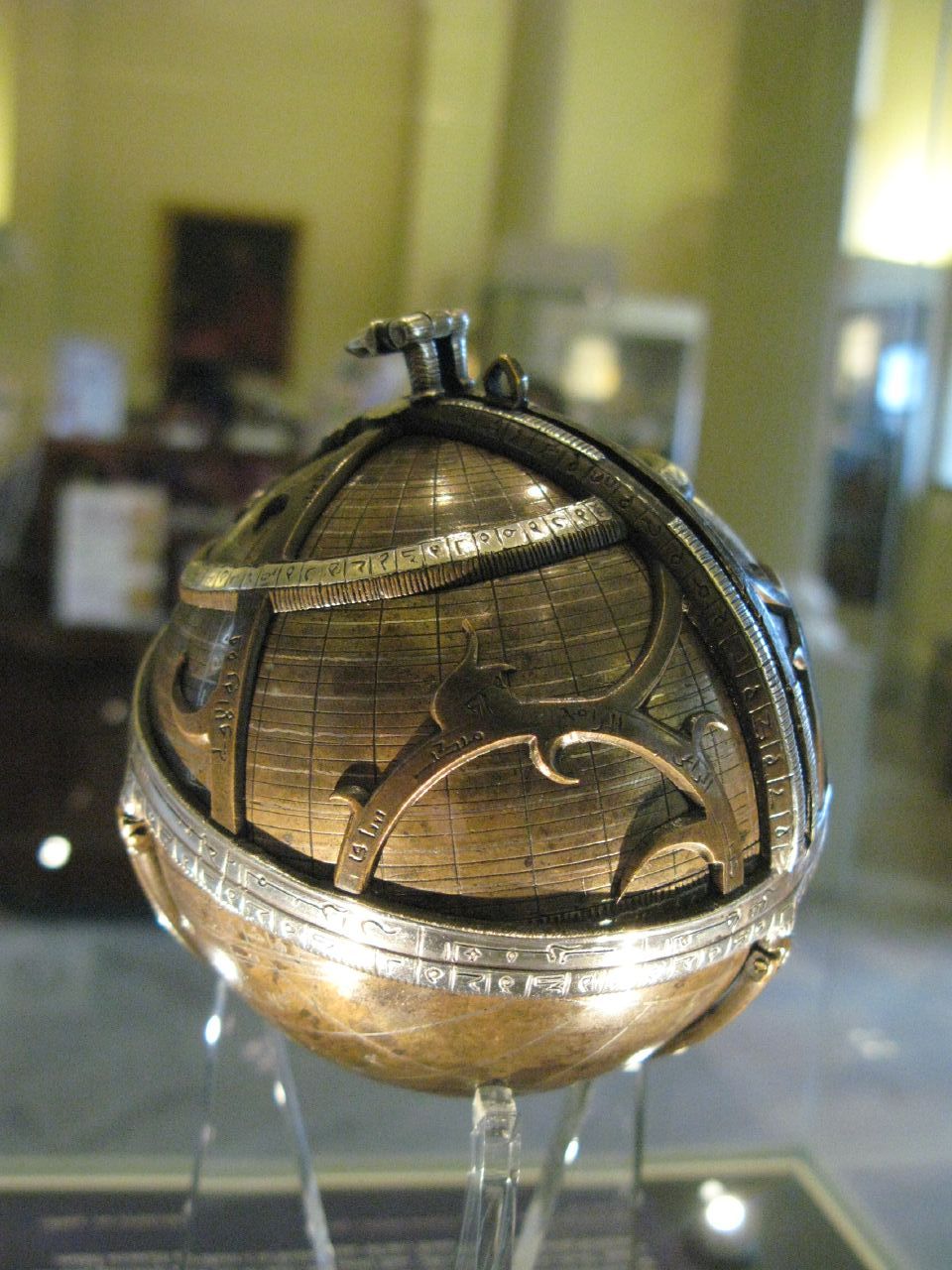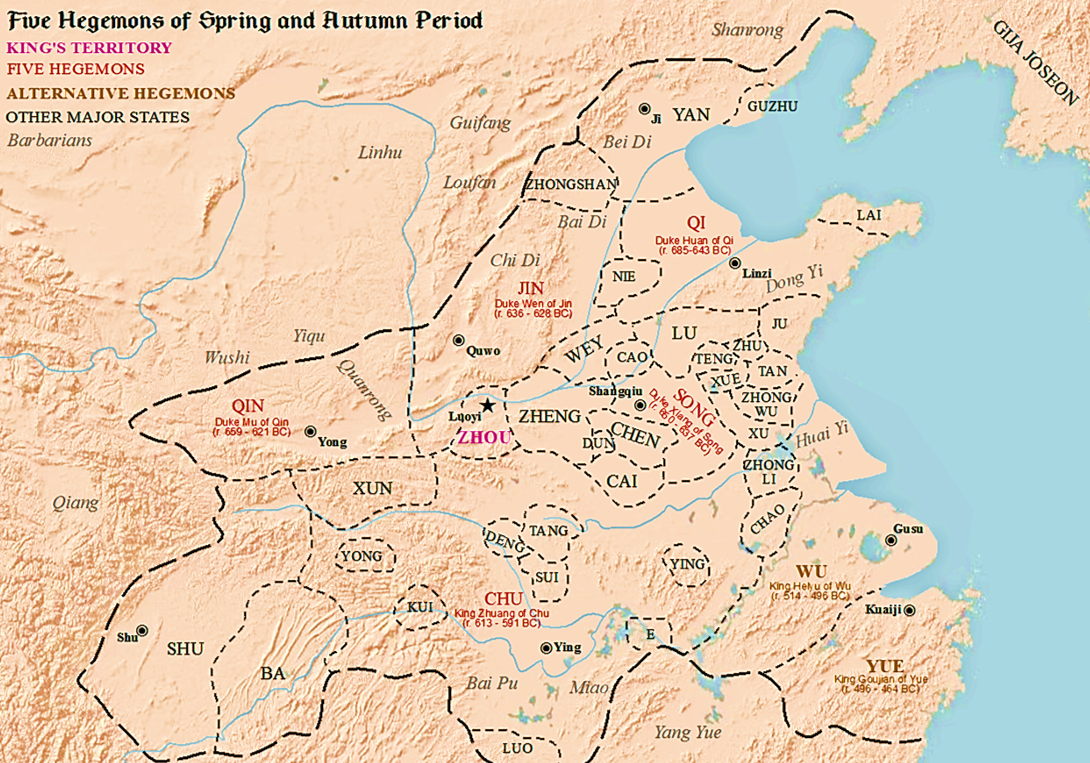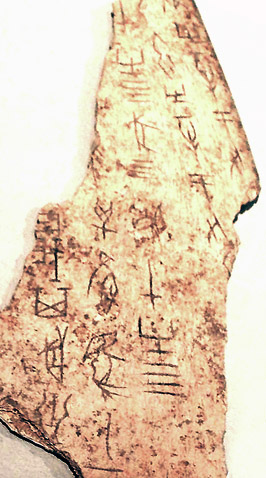|
Dao (state)
Dao () was a Chinese vassal state during the Zhou dynasty (1046–221 BCE) located in the southern part of Runan County, Henan. Dao existed in the shadow of the powerful neighbouring State of Chu which was held in check by the equally powerful State of Qi. Whilst Duke Huan of Qi remained alive as one of the Five Hegemons, Qi maintained friendly relations with Dao along with the other small states of Jiang, Huang and Bai (柏) amongst others.Zuozhuan,僖公五年,"楚鬭穀於菟滅弦,弦子奔黃。於是江、黃、道、柏方睦於齊,皆弦姻也。" When the Duke died in 643 BCE, civil disorder broke out in Qi and the State of Chu seized the opportunity to expand their territory northwards. The inhabitants of Dao were resettled in a place called Jingdi (荊地) until King Ping of Chu ascended the throne and restored Dao to its former territory. At some point Dao was finally exterminated by Chu although the time at which this occurred is currently unknown. References * ... [...More Info...] [...Related Items...] OR: [Wikipedia] [Google] [Baidu] |
Queshan County
Queshan County () is a county under the prefecture-level city of Zhumadian, Henan Province Henan; alternatively Honan is a province in Central China. Henan is home to many heritage sites, including Yinxu, the ruins of the final capital of the Shang dynasty () and the Shaolin Temple. Four of the historical capitals of China, Luo ..., China. Administrative divisions , this county is divided to 3 subdistricts and 10 towns. ;Subdistricts * Panlong Subdistrict () * Sanlihe Subdistrict () * Langling Subdistrict () ;Towns -Former Towns and Townships: *Yifeng (), Shigunhe Township () and Wagang Township () Climate References County-level divisions of Henan Zhumadian {{Henan-geo-stub ... [...More Info...] [...Related Items...] OR: [Wikipedia] [Google] [Baidu] |
Jiāng (state)
Jiang (), also known as Hong () during the Shang dynasty or Qiong () in some historical sources, was a vassal state in China that encompasses the southeastern Henan from 1101 BCE to 623 BCE. The nation was ruled by the Ying family (), and the state name is widely believed to be the origin of the Chinese surname Jiang. The swan goose was the totem of the state. History Early history (before 1045 BCE) In 1101 BCE, Yu the Great, the leader of China under the Xia dynasty allocated a piece of land on the riverbanks of the Huai River to Genchu () under the Fengjian system. Genchu was the son of Boyi, a legendary tribal leader who was loyal to Yu the Great, and the allocation of the land to Genchu was mainly for rewarding Boyi's family for Boyi's exemplary achievements in controlling the Great Flood. Chinese historian Guangyue He () believes that the state was part of Dongyi, a group of tribes in eastern China during the pre- Qin era, and moved southwards to modern-day Hena ... [...More Info...] [...Related Items...] OR: [Wikipedia] [Google] [Baidu] |
11th-century BC Establishments In China
The 11th century is the period from 1001 (represented by the Roman numerals MI) through 1100 (MC) in accordance with the Julian calendar, and the 1st century of the 2nd millennium. In the history of Europe, this period is considered the early part of the High Middle Ages. There was, after a brief ascendancy, a sudden decline of Byzantine power and a rise of Norman domination over much of Europe, along with the prominent role in Europe of notably influential popes. Christendom experienced a formal schism in this century which had been developing over previous centuries between the Latin West and Byzantine East, causing a split in its two largest denominations to this day: Roman Catholicism and Eastern Orthodoxy. In Song dynasty China and the classical Islamic world, this century marked the high point for both classical Chinese civilization, science and technology, and classical Islamic science, philosophy, technology and literature. Rival political factions at the Song dynast ... [...More Info...] [...Related Items...] OR: [Wikipedia] [Google] [Baidu] |
States Of The Spring And Autumn Period
State most commonly refers to: * State (polity), a centralized political organization that regulates law and society within a territory **Sovereign state, a sovereign polity in international law, commonly referred to as a country **Nation state, a state where the majority identify with a single nation (with shared culture or ethnic group) ** Constituent state, a political subdivision of a state ** Federated state, constituent states part of a federation *** U.S. state * State of nature, a concept within philosophy that describes the way humans acted before forming societies or civilizations State may also refer to: Arts, entertainment, and media Literature * '' State Magazine'', a monthly magazine published by the U.S. Department of State * ''The State'' (newspaper), a daily newspaper in Columbia, South Carolina, United States * '' Our State'', a monthly magazine published in North Carolina and formerly called ''The State'' * The State (Larry Niven), a fictional future gover ... [...More Info...] [...Related Items...] OR: [Wikipedia] [Google] [Baidu] |
Ancient Chinese States
Ancient Chinese states () were dynastic polities of China within and without the Zhou dynasty, Zhou cultural sphere prior to Qin's wars of unification. They ranged in size from large estates, to city-states to much vaster territories with multiple population centers. Many of these submitted to royal authority, but many did not—even those that shared the same culture and ancestral temple surname as the ruling house. Prior to the Battle of Muye, Zhou conquest of Shang, these ancient states were already extant as units of the preceding Shang dynasty, Predynastic Zhou or polities of other cultural groups. Once the Zhou had established themselves, they made grants of land and relative local autonomy to kinfolk in return for military support and tributes, under a system known as ''fengjian''. The rulers of the states were collectively the ''zhuhou'' (). Over the course of the Zhou dynasty ( 1046–256 ), the ties of family between the states attenuated, the power of the central gover ... [...More Info...] [...Related Items...] OR: [Wikipedia] [Google] [Baidu] |
Yang Bojun
Yang Bojun (; 1 September 1909 − 1992) was a Chinese philologist best known for his ''Chunqiu Zuozhuan Zhu'' (), an annotated commentary of the ancient Chinese historical text and Confucian classic ''Zuo Zhuan''. The work took him more than twenty years to finish. His commentaries of the ''Analects of Confucius'' and the ''Mencius (book), Mencius'' are also highly influential. Early life and education Yang Bojun was born in September 1909 in Changsha, Hunan province. He was the eldest son of Yang Shugu (), and was also known as Yang Dechong (). Starting in childhood, he was taught by his grandfather to read Confucian classics such as the ''Analects'', the ''Book of Poetry'', and the ''Zuo zhuan''. In 1926, he passed the examination to enter the Chinese department of Peking University, where he studied under prominent scholars such as Qian Xuantong, Chen Yuan (historian), Chen Yuan, and the philologist Huang Kan. He graduated in 1932. However, the person who influenced him the ... [...More Info...] [...Related Items...] OR: [Wikipedia] [Google] [Baidu] |
King Ping Of Chu
King Ping of Chu (), personal name Xiong Ju, was king of the Chu state from 528 BC to 516 BC. He was a son of King Gong. King Ping was succeeded by his son, King Zhao. References Monarchs of Chu (state) 6th-century BC Chinese monarchs Year of birth unknown 510s BC deaths Chinese kings {{China-royal-stub ... [...More Info...] [...Related Items...] OR: [Wikipedia] [Google] [Baidu] |
Zuozhuan
The ''Zuo Zhuan'' ( zh, t=左傳, w=Tso Chuan; ), often translated as ''The Zuo Tradition'' or as ''The Commentary of Zuo'', is an ancient Chinese narrative history traditionally regarded as a commentary on the ancient Chinese chronicle the '' Spring and Autumn Annals''. It comprises 30 chapters covering the period from 722 to 468BC, and focuses mainly on political, diplomatic, and military affairs from that era. For many centuries, the ''Zuo Zhuan'' was the primary text through which educated Chinese learned their ancient history. The ''Zuo Zhuan'' does not simply explain the wording of the ''Spring and Autumn Annals'', but rather expounds upon its historical background with rich and lively accounts of the history and culture of the Spring and Autumn period (771476 BC). The ''Zuo Zhuan'' is the source of more Chinese sayings and idioms than any other classical work, and its concise, flowing style served as a paragon of elegant Classical Chinese. Its tendency toward thi ... [...More Info...] [...Related Items...] OR: [Wikipedia] [Google] [Baidu] |
Huang (state)
Huang was an ancient Chinese state that existed during the Spring and Autumn period. Their ruling family's surname may have been either Ying or Mi. History The Bamboo Annals record that King Xiang of Xia launched an expedition against the "Huangyi" (黃夷) in the third year of his reign. In 704 BCE, the states of Huang and Sui didn't attend a meeting called upon by Chu. Chu reprimanded Huang and attacked Sui. In 675 BCE, the King of Chu attacked Huang at Jiling (踖陵) and defeated them. In 658 BCE, the rulers of the states of Jiang and Huang made a covenant with the states of Song A song is a musical composition performed by the human voice. The voice often carries the melody (a series of distinct and fixed pitches) using patterns of sound and silence. Songs have a structure, such as the common ABA form, and are usu ... and Qi. This was probably an attempt by the latter to push Jiang and Huang away from the influence of Chu. In 656 BCE, Jiang, Huang, and L ... [...More Info...] [...Related Items...] OR: [Wikipedia] [Google] [Baidu] |
Five Hegemons
The Five Hegemons (), also referred to as the Five Hegemons of the Spring and Autumn period (), refers to several especially powerful rulers of Chinese states of the Spring and Autumn period of Chinese history (770–476 BCE), sometimes alternatively referred to as the "Age of Hegemons". There are various lists of five rulers of those certain states which rose to power over the other states of this time period, states which were also formed during the period of dissolution of a once real and strong central state, namely the empire of the Zhou dynasty. The Hegemons mobilized the remnants of the Zhou empire, according to shared mutual political and martial interests. An especially prominent Hegemon was Duke Huan of Qi. Pronunciation and meaning In ancient Chinese, (Old Chinese: ; Pinyin: ) '' has a similar meaning and pronunciation to (Old Chinese: ; Pinyin: ), which means 'the eldest son born to the principal wife in a family', or 'senator'. Both and can be translated as th ... [...More Info...] [...Related Items...] OR: [Wikipedia] [Google] [Baidu] |
Henan
Henan; alternatively Honan is a province in Central China. Henan is home to many heritage sites, including Yinxu, the ruins of the final capital of the Shang dynasty () and the Shaolin Temple. Four of the historical capitals of China, Luoyang, Anyang, Kaifeng and Zhengzhou, are in Henan. While the province's name means 'south of the river', approximately a quarter of the province lies north of the Yellow River. With an area of , Henan covers a large part of the fertile and densely populated North China Plain. Its neighboring provinces are Shaanxi, Shanxi, Hebei, Shandong, Anhui, and Hubei. Henan is China's third-most populous province and the most populous among inland provinces, with a population of over 99 million as of 2020. It is also the world's seventh-most populous administrative division; if it were a country by itself, Henan would be the 17th-most populous in the world, behind Egypt and Vietnam. People from Henan often suffer from regional discrimination ... [...More Info...] [...Related Items...] OR: [Wikipedia] [Google] [Baidu] |
Duke Huan Of Qi
Duke Huan of Qi (), personal name Lü Xiaobai, was a duke of the Qi state, ruling from 685 BC to 643 BC. Duke Huan and his long-time advisor Guan Zhong managed to transform Qi into China's most powerful polity. Duke Huan is commonly listed among the Five Hegemons of the Spring and Autumn period. Toward the end of his more than 40-year-long reign, however, Duke Huan's power began to decline as he grew ill and the Qi state came to be embroiled in factional strife. Following his death in 643 BC, Qi completely lost its predominance. Early life and rise to power Xiǎobái was born as one of Duke Xi of Qi's sons, though not in line of succession for the throne as he had at least two older brothers: Zhu'er and Jiu. In his youth, Xiǎobái was tutored by Bao Shuya. When Duke Xi eventually died, Zhu'er became Qi's next ruler as " Duke Xiang" but his reign was fraught with internal conflicts and scandals. Recognizing this and fearing for his pupil's life, Bao Shuya took Xiǎobái and ... [...More Info...] [...Related Items...] OR: [Wikipedia] [Google] [Baidu] |



